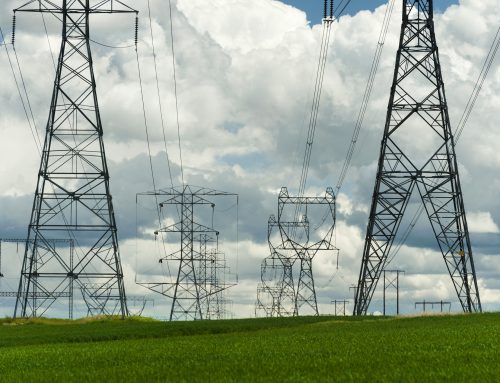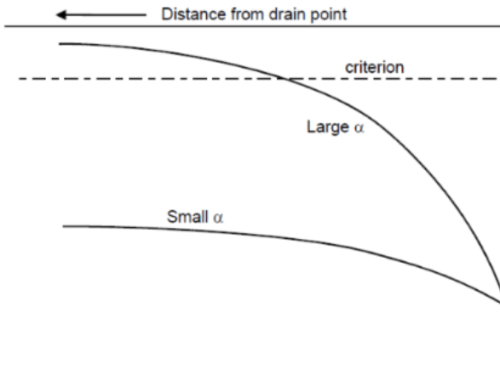Mitigating AC Interference: How to Protect Pipeline Integrity with the Right Tools
Author: Joe Pikas

As high-voltage power lines expand and modernize, pipeline engineers face a growing challenge: mitigating AC interference. With pipelines often running close to power lines, AC-induced corrosion, and elevated current densities present significant risks to pipeline integrity and public safety. Here’s an overview of why AC interference has become a pressing issue and how Technical Toolboxes’ AC Mitigation PowerTool and Enterprise Plus Package provide powerful solutions to address it.
Understanding the Risks: Why AC Interference Is a Growing Challenge
AC interference has always been a concern, but today’s power infrastructure upgrades are bringing it to the forefront. Modern “advanced conductors” are designed to carry significantly higher loads—up to three to five times the peak load of previous power lines. These upgrades are efficient for power companies, but they also mean higher induced currents on nearby pipelines, even when power lines are up to a quarter mile away.
In high-density urban areas, this issue is especially pronounced. Utility corridors commonly combine pipelines with high-voltage transmission lines, creating a setup ripe for AC interference. This interference can lead to AC corrosion, potentially damaging the pipeline’s coating and materials and compromising its long-term integrity. Given this heightened risk, mitigation is no longer optional for pipeline operators—it’s essential.
The AC Mitigation PowerTool: Core Capabilities and Benefits
Our AC Mitigation PowerTool is designed specifically for this complex environment, where pipeline operators must balance efficient design with stringent safety standards. Let’s look at the key features that make this tool indispensable for engineers:
- Modeling Both Steady State and Fault Conditions:
The tool’s Steady State Module calculates induced AC voltages and current densities that arise from day-to-day operations near high-voltage lines. Meanwhile, the Fault Current Module helps simulate rare but high-risk fault episodic conditions, like lightning strikes. These dual capabilities ensure engineers can assess both everyday and exceptional scenarios, providing a full picture of potential risks. - GIS Mapping Integration:
The PowerTool includes ArcGIS capabilities, which integrate pipeline and powerline mapping data, giving users a visual model of pipeline proximity to power lines. Engineers can map pipelines and power lines, pinpointing potential problem areas by distance and overlaying critical data points like coating resistance and soil resistivity. With this mapping, engineers can optimize their mitigation plans based on real-world terrain and infrastructure details. - Current Density Analysis and Compliance:
Using guidelines from the Association for Materials Protection and Performance (AMPP), the PowerTool assesses current density with accuracy, following standards for safe and effective pipeline operation. The tool’s Barnes layering functionality lets users view different soil resistivity levels to achieve a realistic model of AC current behavior, helping pipeline operators develop mitigation that complies with AMPP standards. - Modeling in Hours, Not Days:
One of the standout features of the PowerTool is its speed. Modeling and mitigation take hours instead of days, which allows engineers to quickly run “what-if” scenarios and tweak mitigation parameters as needed. Users can even toggle between unmitigated and mitigated states to see how each mitigation method affects AC current density and induced voltage, helping them make quick, well-informed decisions.
Enhanced Support with the AC Mitigation Enterprise Plus Package
For engineers handling complex, large-scale, or high-risk projects, the Enterprise Plus Package builds on the core PowerTool with consulting and customization support. Here is what this premium package brings to the table:
- Pre-Project Consulting:
Starting a project on the right foot is essential, especially when working in dense urban corridors or with advanced conductors. The Enterprise Plus Package includes consulting services that help teams plan the project’s scope, determine the best approaches, and ensure that all needed data is in place before modeling begins.
- Advanced Software Consulting and Customization:
Mitigating AC mitigation is not a one-size-fits-all task, and our team understands the need for specialized solutions. We work with users to customize data reporting, assess the impact of various mitigation designs, and make adjustments tailored to the specific demands of a project. Whether it’s interpreting model outputs or selecting mitigation strategies, we are there to provide insight and direction.
- Results Interpretation:
After modeling, understanding the results is essential to creating effective mitigation plans. The Enterprise Plus team assists with interpreting output data, whether it is current density metrics, voltage readings, or GIS data. We help engineers connect the numbers to real-world actions, ensuring each decision is well-grounded in the latest data.
Real-World Application: Conventional vs. Advanced Power Conductors
During testing, the AC Mitigation PowerTool showed impressive capabilities in mitigating AC interference under real-world conditions. By comparing scenarios with both conventional and advanced conductors, we found that the PowerTool can significantly lower AC current densities and induced voltages, even in high-risk environments. 
- With Conventional Conductors: Applying the AC PowerTool’s mitigation methods reduced induced voltage and current densities to safe levels, showing how effective standard mitigation can be when high-capacity conductors are not involved.
- With Advanced Conductors: In these scenarios, the initial unmitigated models showed voltages and current densities up to five times higher than those with conventional conductors. However, the PowerTool brought these extreme values back into safe ranges, demonstrating its flexibility and adaptability for modern power systems.
Using the PowerTool to switch quickly between mitigated and unmitigated models, engineers can visualize the impact of their decisions and optimize their approach based on specific project conditions. This capability is especially valuable in today’s environment, where power demands are rising, and infrastructure must keep pace.
Closing Thoughts: The Future of AC Interference Mitigation
As the energy landscape changes, so must our approach to AC interference mitigation. The AC Mitigation PowerTool, combined with the Enterprise Plus Package, provides a comprehensive solution that is as adaptable as it is powerful. For pipeline engineers, these tools offer the precision and flexibility needed to keep pace with infrastructure demands, all while safeguarding pipeline integrity.
Whether you’re looking to implement a straightforward mitigation plan or need tailored support for a complex project, Technical Toolboxes is here to help. Protecting pipelines from AC interference isn’t about technology—it’s about maintaining safety, efficiency, and reliability in every corner of your operations.
For more information, reach out to our team, and let’s start planning the future of your pipeline integrity together.
Suggested Post
Why API Inspections Still Matter More Than Ever
Why API Inspections Still Matter More Than Ever By Kesley Price In an industry [...]
How Utility Teams are Standardizing Pipeline Calcs
How Utility Teams are Standardizing Pipeline Calcs By Kesley Price Engineering teams working in [...]
GASCalc and GASWorkS are Now Part of Technical Toolboxes
GASCalc and GASWorkS are Now Part of Technical Toolboxes We are pleased to announce that Technical Toolboxes has acquired the [...]











